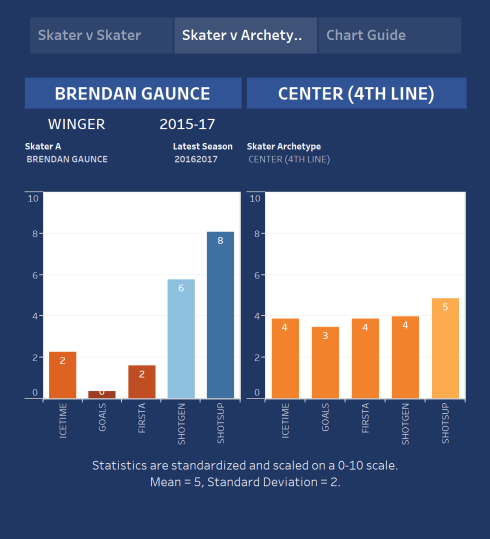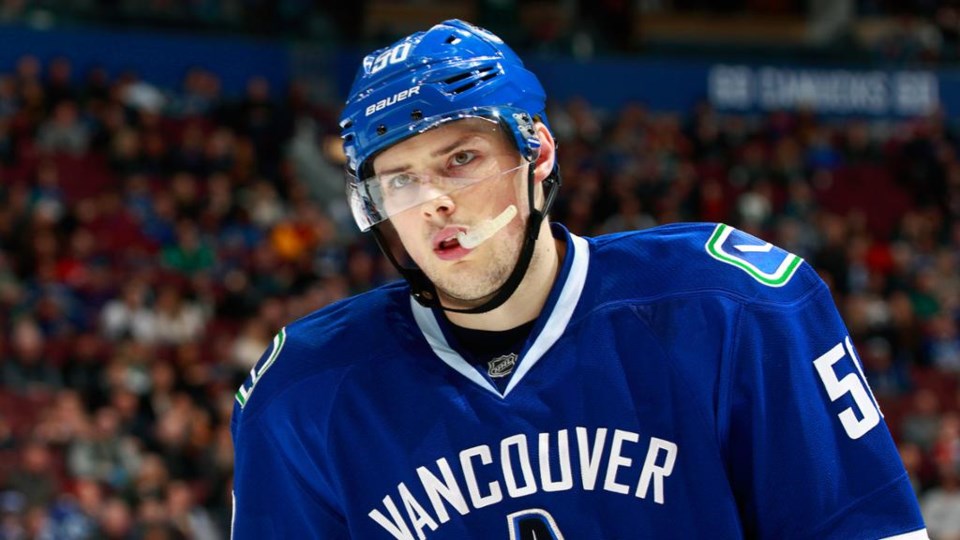Bo Horvat and Brendan Gaunce were selected at opposite ends of the first round. This past season, they played at opposite ends of the lineup: Horvat edged towards becoming a legitimate first-line centre, while Gaunce established himself on the fourth line. And, as restricted free agents coming off entry-level deals, theyāre likely to be at opposite ends in terms of compensation.
Horvat is likely to get a long-term deal, likely 6-8 years, worth anywhere from $4.5 to $6 million per year. Itās a complicated negotiation, full of and the fact that heās the on the Canucks roster.
Itās understandable, then, that Horvatās contract negotiation will take a while. There are all sorts of moving parts: years, salary, signing bonuses, performance bonuses, no-trade clauses, etc. This isnāt going to be an easy deal to get done.
You would think, however, that Gaunceās contract should be relatively simple. Gaunce has next-to-no leverage: heās not eligible yet for salary arbitration, heās four years away from becoming an unrestricted free agent, and heās coming off a season in which he scored zero goals and had just five assists in 57 games.
Gaunceās lone career goal deflected in off his skate. He has yet to score a goal in the NHL with his stick through 77 games.
With his paltry point production, Gaunce and his agent canāt ask for much more than a one or two-year deal at a minimal salary. Thereās no need for the Canucks to sign him long-term, as he has yet to prove heās a part of the future of the franchise, and thereās no reason to offer much money, as he has yet to earn it.
On top of that, Gaunce is coming off shoulder surgery, so the Canucks might be even more gun-shy about offering him a multi-year deal.
Of course, Gaunceās main contribution this past season was on the defensive side of the puck. Gaunce was one of just three Canuck forwards to play 20+ games and maintain a corsi percentage north of 50%. That means, when he was on the ice at 5-on-5, the Canucks had more shot attempts than their opposition, and his 51.3% corsi led the Canucks.
He accomplished this mainly by suppressing shots from his opponents. Gaunce was on the ice for 49.60 shot attempts against per hour at 5-on-5, the lowest rate on the Canucks. You could make the argument that Gaunce is elite when it comes to shot suppression, though you would have to add the caveat that he has played fourth-line minutes against lesser competition.

Ģż
That is the one complication the Canucks could consider in contract negotiations: Gaunceās underlying puck possession statistics are impressive. The issue is that they have yet to turn into useful results on the scoreboard. And, in general, teams pay for results, not processes.
The truth is, we can be pretty sure what the offer on the table is for Gaunce: his minimum qualifying offer, according to CapFriendly, is $874,125. As stated above, there's not much reason for the Canucks to go much above that minimum. Thatās more than most players with 6 points in 77 games get: most players with that kind of production get closer to the league minimum $650,000 if theyāre lucky.
According to a report by Rick Dhaliwal, the Canucks extended the deadline for Gaunce to accept his qualifying offer from July 15th to August 15th to give some more time for negotiation, as the team was busy dealing with potential arbitration cases for Michael Chaput and Reid Boucher. With those deals done, however, you would think Gaunce's contract would be soon to follow.Ģż
Ģż
Been told the have extended the timeline for Brendan Gaunce's qualifying offer from July 15th to August 15th.
ā Rick Dhaliwal (@DhaliwalSports)
Ģż
Honestly, if I were Gaunce, I would take that qualifying offer and bet on my own ability to continually improve.
Gaunce had a mediocre rookie season in the AHL, scoring 11 goals and 29 points in 74 games. In his second season, he took a monumental stride forward, putting up 17 goals and 38 points in just 46 games, earning himself 20 games in the NHL.
Ryan Johnson canāt say enough good things about Gaunce and his commitment to improving, comparing his conditioning to the gold standard: the Sedins. āThereās a guy that bought in and said, āHey, if you guide me, Iāll do the work.āā
āHe had to learn to compete,ā said Johnson, āhe had to learn how to battle for pucks, and did that under some great guidance from our coaching staff there. He took a step in his second year and became not just a good player in the American League, but one of the better players.ā
From there, he made the jump to becoming a full-time NHL player and, like his first year in the AHL, had a mediocre season overall. But his underlying possession statistics, the fact that he was playing with guys like Jack Skille and Michael Chaput, and an unsustainably low 4.31% on-ice shooting percentage, all suggest that Gaunce is capable of a lot more.
If Gaunce can turn that capability into results, he could be in for a much bigger payday in one or two yearsā time.



